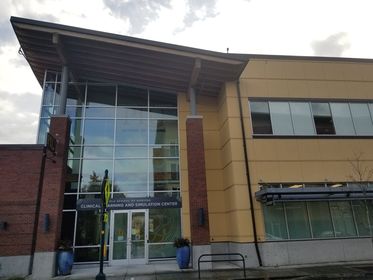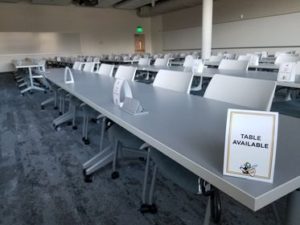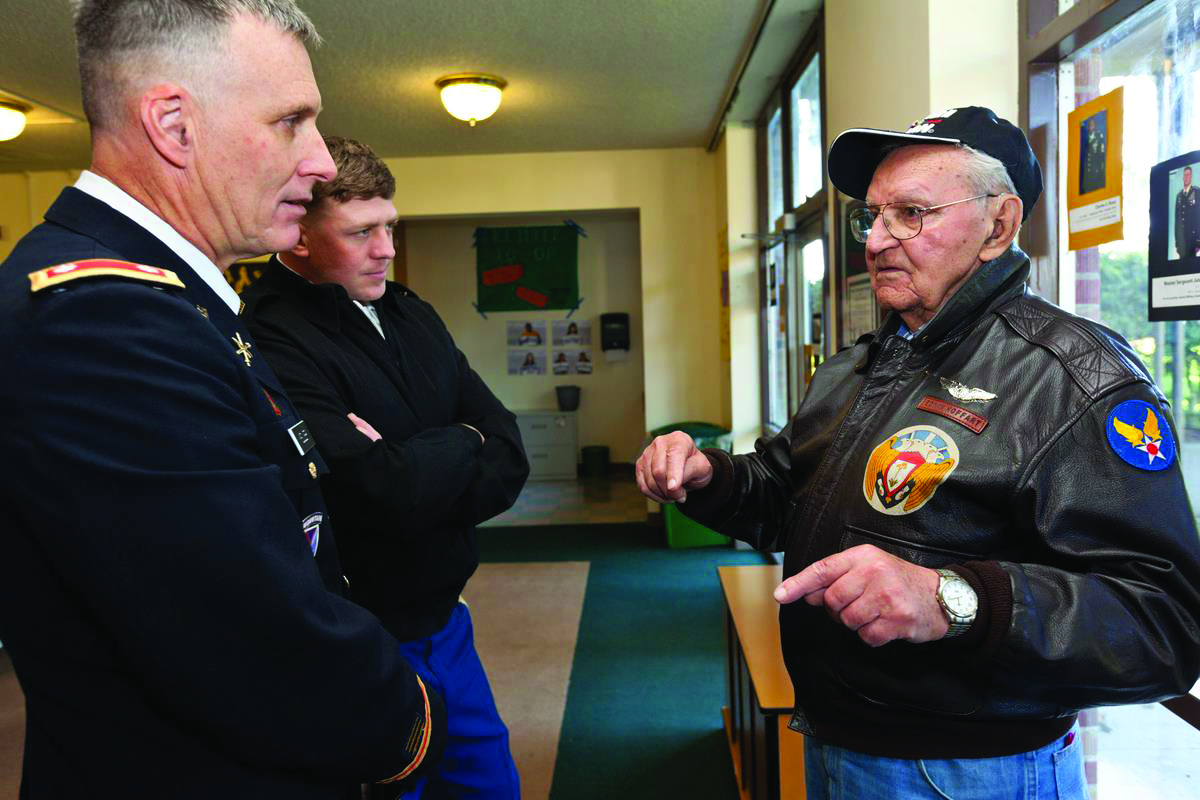
Brennan LaBrie
News Editor
New life has been breathed into the building located at 208 Garfield Street, which sat nearly empty for years. The prominent two-story structure, which until 2016 held the Garfield Book Company at PLU and the PLU Lute Locker, is now home to the PLU School of Nursing’s Clinical Learning and Simulation Center, a state-of-the-art facility opened in September to accommodate the growing nursing program.
The new facility boasts two classrooms overlooking downtown Parkland that can accommodate 96 and 48 students respectively, two clinical labs and two simulation labs, each with their own control and debrief rooms, as well as a lounge, a kitchen, student lockers, and staff offices.
Construction on the facility began in January and was only briefly interrupted by the COVID-19 pandemic, as healthcare-related construction was deemed essential by the state, said Barbara Habermann, Dean of the School of Nursing.
The facility is a major step up from the crowded classrooms in the school’s current headquarters at Ramstad Hall, which Habermann said was “bursting at the seams” in recent years as enrollment in the nursing program steadily increased. A 30% increase in students in the last three years alone led some nursing classes to move to larger classrooms across campus to accommodate the new students. It also placed pressure on Ramstad’s sole simulation lab, which can hold only eight total beds along with one control room and a debrief room fashioned out of a small office.
“It was not an ideal set up by any means,” Habermann said.
The new facility quadruples the number of labs, adds five times the lab space, and doubles the amounts of beds and test mannequins, Habermann said. She added that the spacious new labs and classrooms have allowed the school to continue in-person learning in a safe, socially-distant manner that the smaller rooms in Ramstad could not provide.

“Overall it’s functioning at a very high level,” Habermann said of the facility. “I think students are thoroughly enjoying it, especially the students who had already been in labs and simulations in Ramstad. It’s such a difference. ” She added that the nursing faculty seem just as excited about their new space.
Senior nursing student Amanda Evans appreciates the facility’s look, feel, and capabilities, which she said give students a clearer idea of what they can expect in the professional world.
“These simulation labs are bigger,” she said. “They have a lot of equipment and a lot of shelving so it feels a lot more like an actual hospital room.” However, she might be most excited about the plethora of power plugins throughout the buildings, including outlets placed on each desk, which she said was severely lacking in Rastad. Some students would bring extension cords to power their laptops through tests, she said.
Evans admits that for seniors like herself, the new facility is both exciting and frustrating, as their class gets to spend little to no time in it compared to lower grade levels before they graduate in the Spring.
“It’s a little frustrating that we don’t really get to participate in it, but for future generations it’s going to be really nice,” she said, adding that the increased lab space allows students to hone their professional skills even more than past PLU nursing students.
Both Evans and Habermann see the new facility as a major draw for prospective nursing students.
“PLU’s nursing program is well-respected throughout the region, the Pacific Northwest,” Habermann said. “We always have more qualified applicants than we are able to accept. But when you look at facilities that we had previously, they really weren’t state of the art, they weren’t the best facilities, and I think it puts us in a much better place — that when people come to tour PLU, be that in-person or be that remotely, they get to see the great facilities we now have.”
Curriculum Change
In addition to modifying their program’s facilities, the school of nursing is reinventing their curriculum structure. Starting in the 2021-22 school year, nursing students will begin their nursing curriculum in their junior year, not their sophomore year, as is currently the case. This means that their first two years at PLU will be dedicated to general education requirements, and the final two primarily to nursing classes.
There were two major factors behind this decision, Habermann said. One one hand, the school thought it would be good for its students to have a solid liberal arts foundation before focusing all their attention on nursing classes. In addition, the juggling of gen eds and nursing classes was a burden on both students and administrators. For students, entering the school of nursing sophomore year meant diving immediately into challenging gen ed science classes upon entering PLU, something that Habermann recognized was making their transition to college especially difficult. And when it came to sophomore year, Habermann said that administration had to take every student’s busy gen ed schedule into account when scheduling lengthy nursing labs, something that became a “logistical nightmare” for everyone involved. With the new two-year program for undergrads, Habermann hopes that students can create a more balanced and less rigorous gen ed schedule for themselves, and can then more easily focus on nursing starting their junior year, with fewer gen eds vying for their time.
In the meantime, the school of nursing is looking to create an accelerated bachelor’s program for those who have attained a bachelor’s degree and wish to become a nurse without spending two years on a master’s program. The program would last between 14-16 months instead of the two years required for the master’s degree.



















